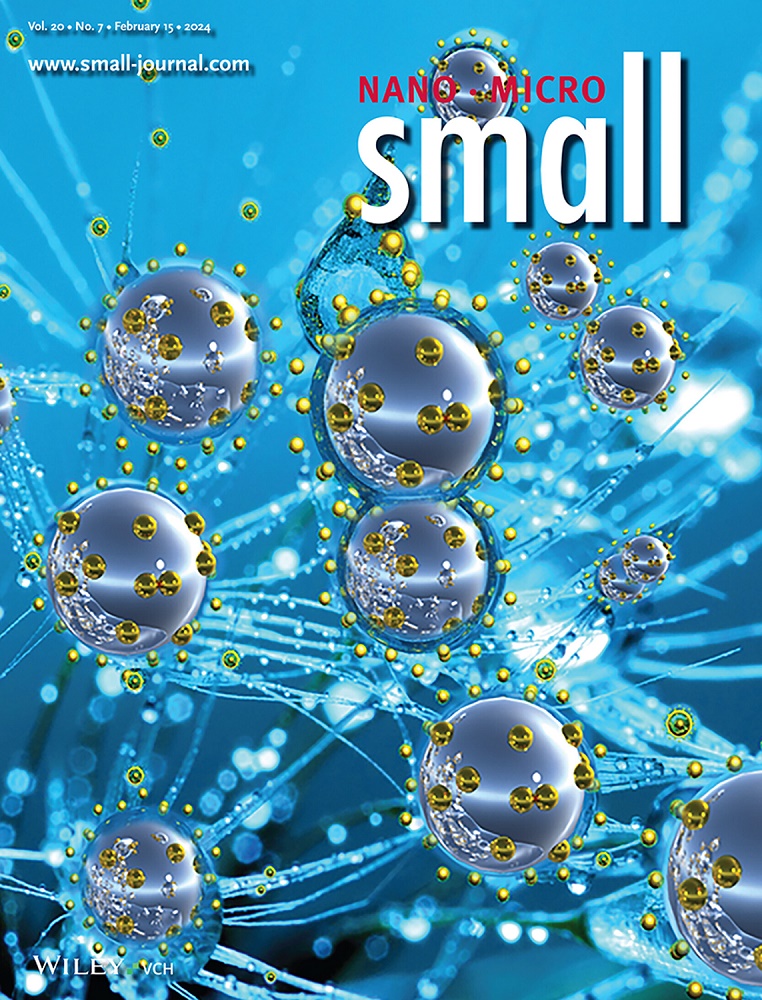二氧化硅纳米纤维与空气夹层和碳化硅外壳的高温隔热气凝胶包封。
IF 12.1
2区 材料科学
Q1 CHEMISTRY, MULTIDISCIPLINARY
引用次数: 0
摘要
为了承受极端条件,硅纤维气凝胶有望在高温下保持超低导热性。但SiO2纤维气凝胶的红外消光能力弱,不能有效抑制热辐射,导致高温下导热系数高。本文采用低压碳热还原法制备了具有高消光壳、空气夹层和非晶芯的二氧化硅-空气-碳化硅纤维。由于低压条件降低了反应的吉布斯自由能,增加了气体分子的扩散速率,反应可以在几秒钟内发生。由于具有高消光能力的SiC壳层对热辐射的抑制作用,以及反应产生的气相热传导在气体平均自由程(70 nm)以下的空气夹层中减弱,气凝胶在较宽的温度范围内表现出超低的导热系数(1000℃时的导热系数为0.108 W m-1 K-1)。同时,超快的反应速率保证了二氧化硅芯的无定形结构,通过触发剪切带(高达80%弹性压缩应变和弯曲恢复性能)保持气凝胶的柔韧性。高温绝热与高柔韧性的结合在极端条件下的绝热应用中显示出良好的潜力。本文章由计算机程序翻译,如有差异,请以英文原文为准。
Encapsulation of SiO2 Nanofibers with Air Interlayer and SiC Shell for High Temperature Thermal Insulating Aerogels.
To endure extreme conditions, silica fiber aerogels are expected to maintain ultralow thermal conductivity at high temperatures. However, the weak infrared extinction capacity of SiO2 fiber aerogels fails to effectively suppress thermal radiation, resulting in high thermal conductivity at high temperatures. Here, SiO2-air-SiC fibers with high extinction shells, air interlayer, and amorphous core are fabricated by low-pressure carbothermal reduction. Owing to low pressure conditions that reduce Gibbs free energy of the reaction and increase the diffusion rate of the gas molecules, the reaction can occur in seconds. With the mitigation of thermal radiation by the incorporation of SiC shell with high extinction capacity and the weakening of gas-phase heat conduction in air interlayer generated by reaction below the mean free path of gas (70 nm), the aerogel shows ultralow thermal conductivity in a wide temperature range (the thermal conductivity at 1000 °C is 0.108 W m-1 K-1). Meanwhile, the ultra-fast reaction rate ensures the amorphous structure of silica core, which can maintain the flexibility of the aerogel by triggering the shear band (up to 80% elastic compressive strain and bending recovery property). The combination of high-temperature thermal insulation and high flexibility shows good potential for thermal insulation applications under extreme conditions.
求助全文
通过发布文献求助,成功后即可免费获取论文全文。
去求助
来源期刊

Small
工程技术-材料科学:综合
CiteScore
17.70
自引率
3.80%
发文量
1830
审稿时长
2.1 months
期刊介绍:
Small serves as an exceptional platform for both experimental and theoretical studies in fundamental and applied interdisciplinary research at the nano- and microscale. The journal offers a compelling mix of peer-reviewed Research Articles, Reviews, Perspectives, and Comments.
With a remarkable 2022 Journal Impact Factor of 13.3 (Journal Citation Reports from Clarivate Analytics, 2023), Small remains among the top multidisciplinary journals, covering a wide range of topics at the interface of materials science, chemistry, physics, engineering, medicine, and biology.
Small's readership includes biochemists, biologists, biomedical scientists, chemists, engineers, information technologists, materials scientists, physicists, and theoreticians alike.
 求助内容:
求助内容: 应助结果提醒方式:
应助结果提醒方式:


